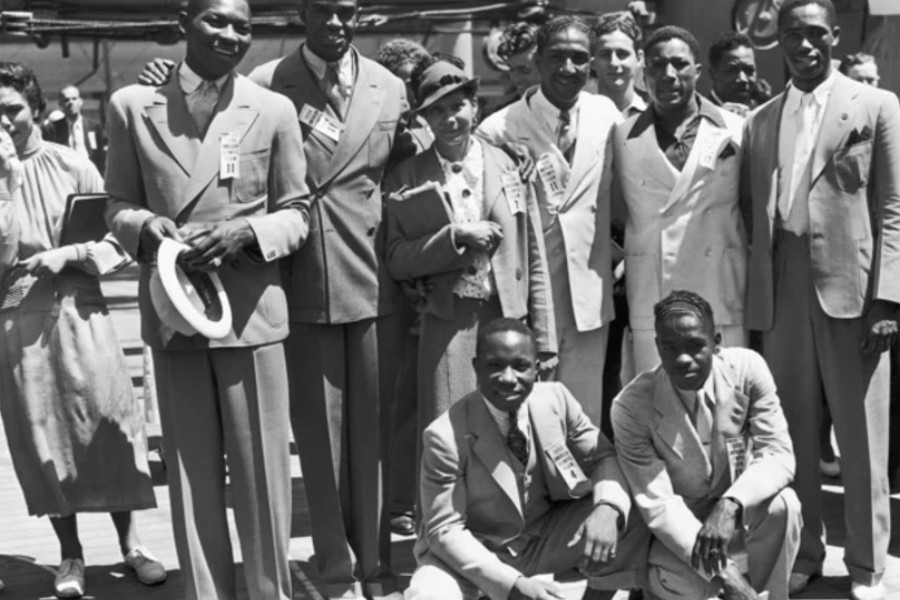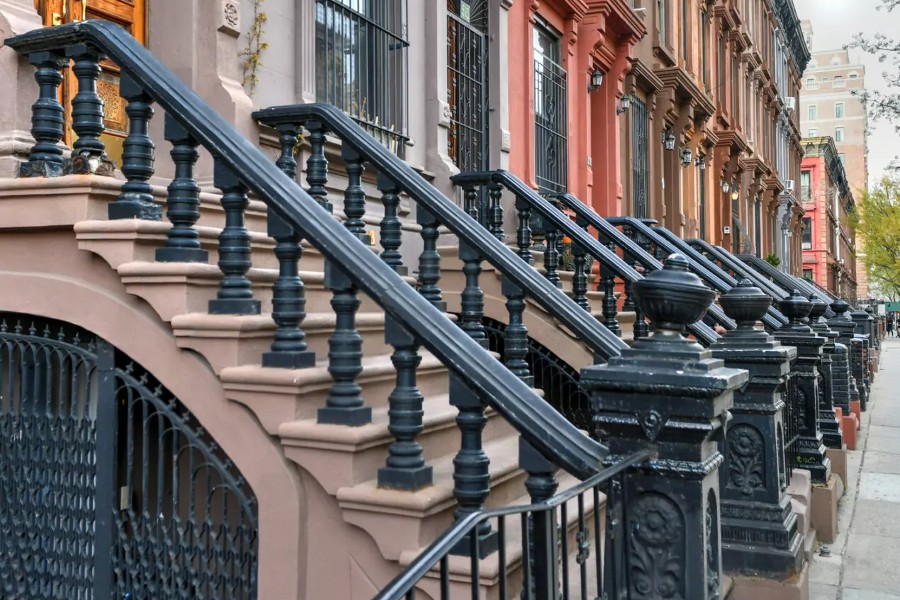Imagining America is a consortium of universities dedicated to civic engagement in the arts. As part of Harlem Advocacy Week, which ran from October 1 to October 7, I attended Imagining America’s tour of Harlem’s Cultural Jewels. The tour stopped at the Studio Museum in Harlem, the Schomburg Center and The Harlem Stage Gatehouse.
This season’s Caribbean Crossroads program at the Studio Museum spans 400 years and 500 works of art. My favorite image in this rich exhibition is Ebony Patterson’s sparkling depiction of a Jamaican nightclub goer. I also felt drawn to Dudley Irons’ Black Star Liner, made entirely out of matchsticks and Joseph Kidd’s 19th Century painting of Ivory Billed Woodpeckers.
In the Studio Museum’s basement exhibition, Expanding the Walls, New York City high school students took inspiration from photographs by James Van der Zee to produce their own work. At the end of the program, students earned the camera with which they had created their project. In accord with our culture of technological and less direct interaction, many students photographed objects, or people as objects in comparison to the personal, face-on portraits of Van der Zee.
As our tour bus drove between venues, Joyce from Unique NY tours, explained how the Apollo started in 1913, run by Sidney Cohen. Initially, the Apollo was a burlesque venue and didn’t admit African American audience members. After Fiorella La Guardia (who lived in East Harlem) became mayor in 1933, he reinvented the Apollo as a variety revue venue and started allowing people of African American descent through the doors in 1934.
At the Schomburg Center, curator, Christopher P. Moore, explained to us the cosmogram on the lobby’s floor. The design is inspired by the poem, The Negro Speaks of Rivers by Langston Hughes, whose cremated remains are interred beneath an emblem saying, “My soul has grown deep like the rivers.”
The Schomburg’s current exhibition is work by Gordon Parks, the photographer, writer, composer, musician and filmmaker. The exhibition includes his groundbreaking photographs of African American children and of Ella Watson, government charwoman (a woman employed to clean houses or offices). When Parks’ boss saw his famous photograph, American Gothic, Washington D.C., he said, “Well, you’re getting the right idea but you’re going to get us all fired.” Parks later became the first African American photographer for Life magazine.
The Harlem Stage Gatehouse, a performance space, was our last stop. The building, a New York City landmark, was designed in 1890 as part of the Croton Aqueduct system. Three of the original nine floors have been excavated, carefully keeping much of the original design elements. The panel discussion in the Gatehouse’s theater included representatives of Columbia University, Harlem Stage, the Apollo, Harlem Community Development Program, Harlem Arts Alliance, 125th Street Business Improvement District and Jazzmobile.
Tour participants traveled to Harlem from other states including Delaware, Minnesota and Michigan. As the neighborhood changes, I enjoyed seeing how the future of Harlem is learning from its history and I look forward to uncovering more of Harlem’s Cultural Jewels.
Here are the links:
Collection David Beitzel, New York. Courtesy the artist. 2) Dudley Irons
Black Star Liner, 1995 Wayne and Myrene Cox Collection.
Related articles

Become a Harlem Insider!
By submitting this form, you are consenting to receive marketing emails from: . You can revoke your consent to receive emails at any time by using the SafeUnsubscribe® link, found at the bottom of every email. Emails are serviced by Constant Contact



































